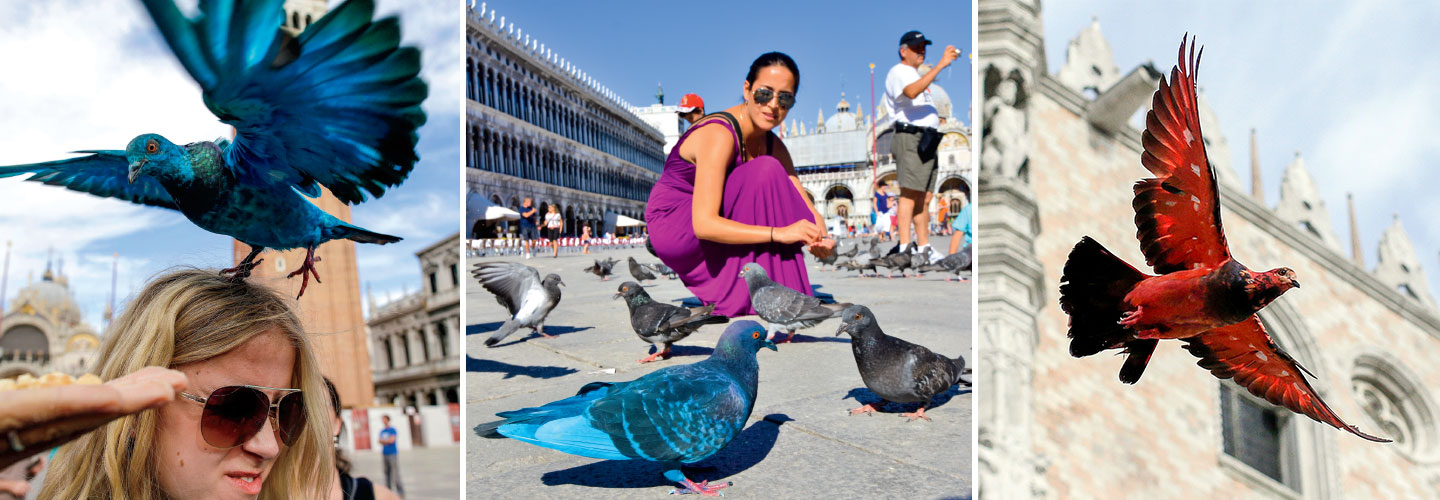Birds in two European cities have unwittingly become part of an artwork. A pair of artists installed a cage-like device on a rooftop in Copenhagen, Denmark, and later in Venice, Italy. When pigeons fly inside, a conveyor belt carries them through the contraption. It sprays the birds with non-toxic dye that fades over time. The machine then releases the tropical-looking pigeons back into their urban habitats. Some people see the project as a fascinating public artwork. But critics say that trapping and dyeing the birds is a form of animal abuse.
- Which side of the debate are you on? Write a few paragraphs explaining why animals should or should not be used in artworks. Then ask some friends or family members what they think. Exchange thoughts with someone who feels differently than you.
- Choose a common animal or insect that people often overlook. Brainstorm a way you could bring more attention to the creature. Write a paragraph discussing your ideas and hypothesizing how people might react to your plan. Then make a diagram and include drawings detailing your plan.

